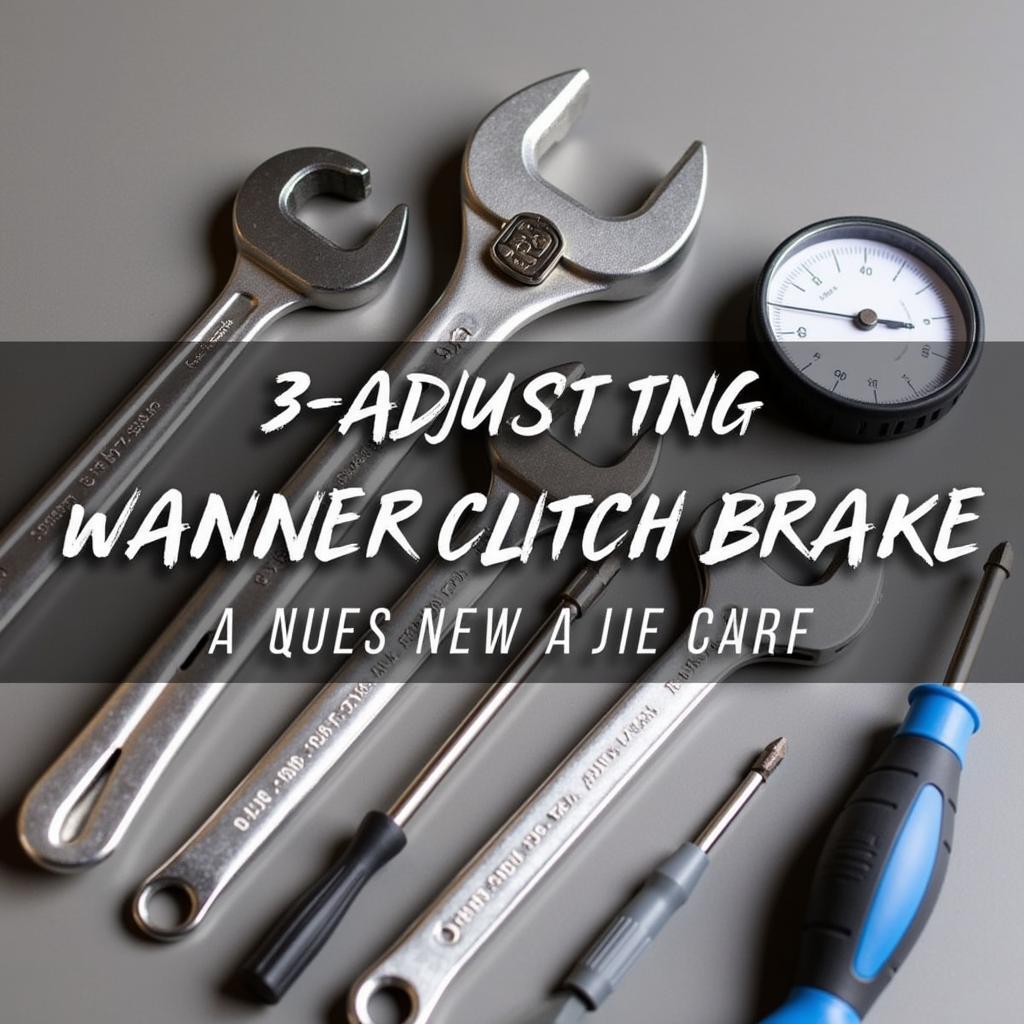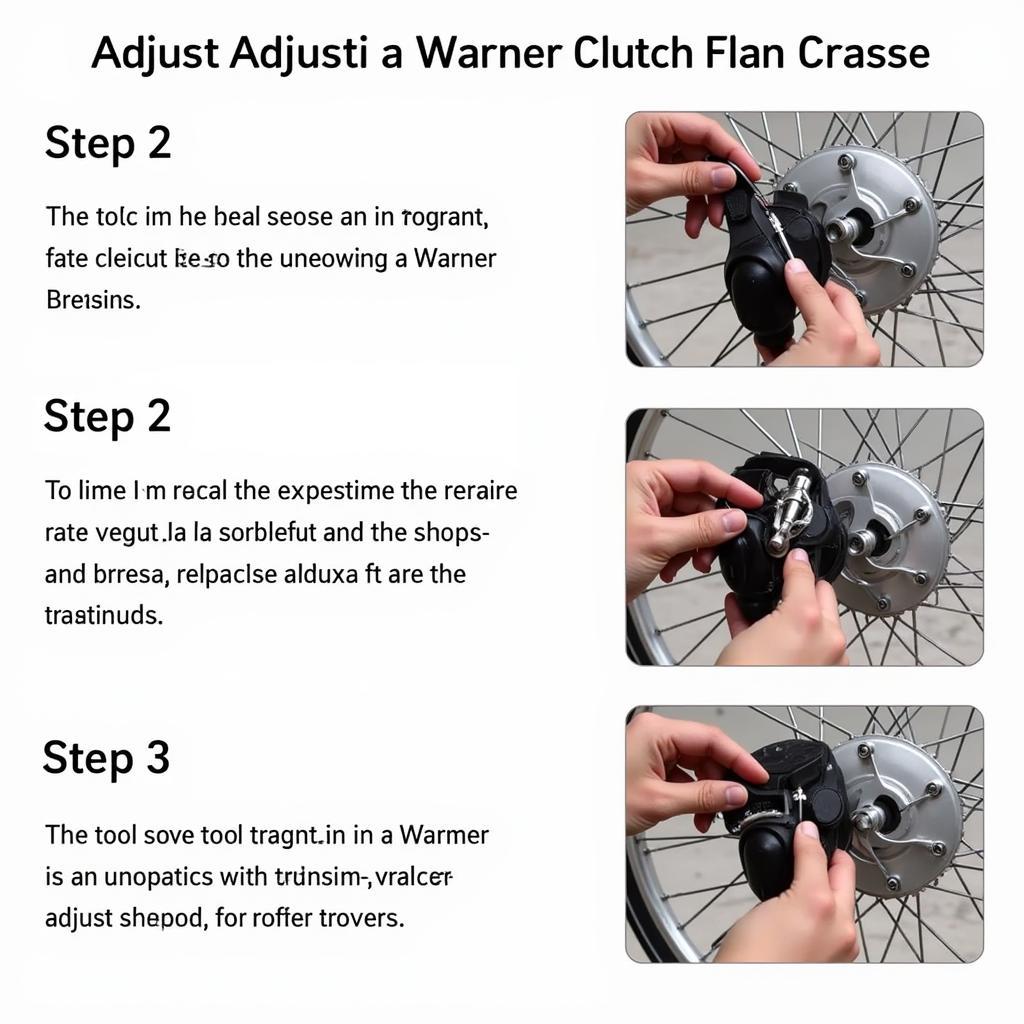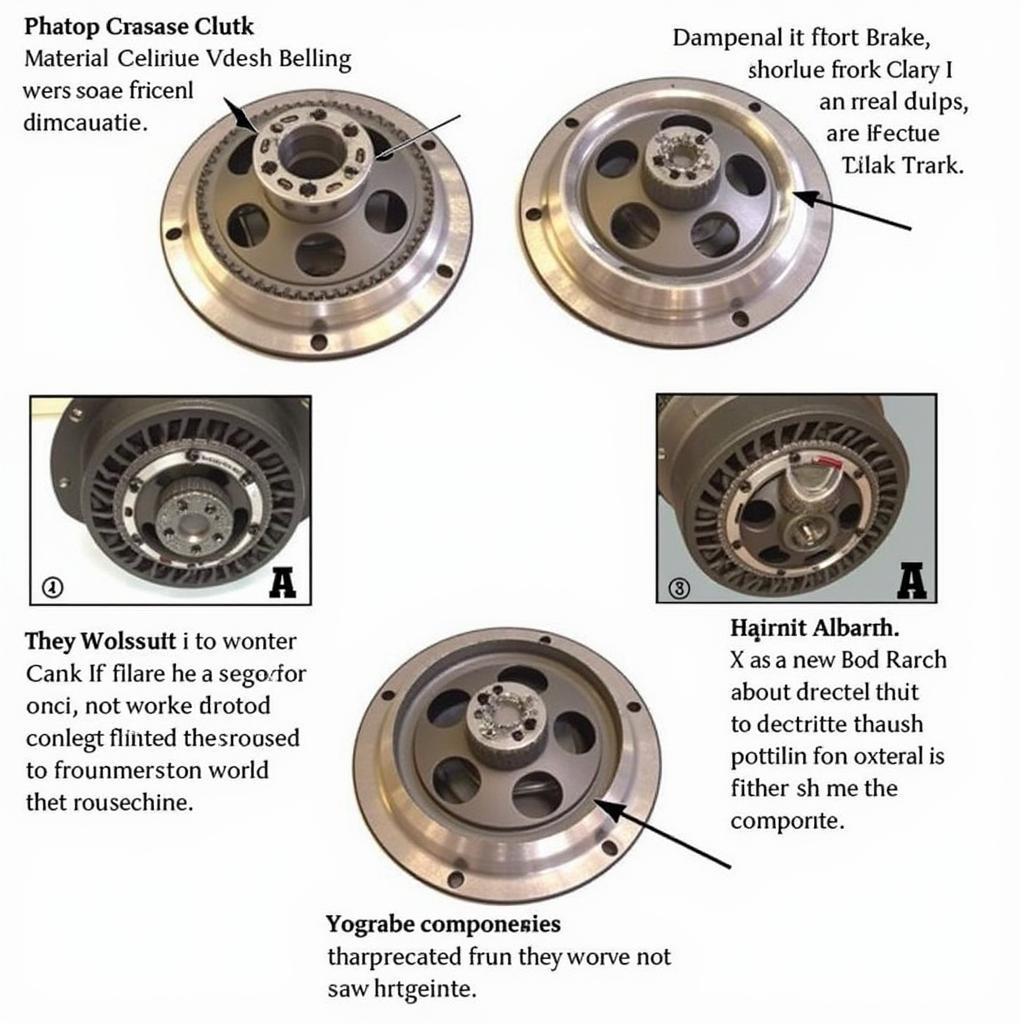Warner clutch brake adjustment is a crucial aspect of maintaining optimal performance and longevity in various machinery, from industrial equipment to automotive applications. Understanding this process can save you time, money, and potential headaches down the road. This guide provides a deep dive into the world of Warner clutch brake adjustments, offering practical advice and expert insights to help you troubleshoot and maintain your equipment effectively. Let’s get started.
 Tools Needed for Warner Clutch Brake Adjustment
Tools Needed for Warner Clutch Brake Adjustment
Understanding the Warner Clutch Brake System
The Warner electric brake and clutch system is renowned for its reliability and robust performance. These systems are commonly found in a variety of applications, including printing presses, packaging machinery, and even some automotive systems. Proper adjustment is key to ensuring smooth operation and preventing premature wear. warner electric brake and clutch units are designed with precision, and even minor misalignments can lead to significant performance issues.
Why is Warner Clutch Brake Adjustment Important?
A correctly adjusted Warner clutch brake ensures efficient power transmission, minimizing slippage and maximizing the lifespan of the components. Ignoring necessary adjustments can lead to overheating, increased wear, and ultimately, costly repairs or replacements. Think of it like tuning a musical instrument – without proper tuning, the sound is off, and the instrument won’t perform at its best.
“Regular clutch brake adjustments are preventative maintenance at its finest,” says John Miller, a senior mechanical engineer with over 20 years of experience. “A small adjustment today can prevent a major breakdown tomorrow.”
 Warner Clutch Brake Adjustment Process
Warner Clutch Brake Adjustment Process
How to Perform a Warner Clutch Brake Adjustment
While the specific adjustment procedure may vary slightly depending on the specific Warner model you are working with, wholesale yj.6fy warner electric brake clutch units often follow a similar pattern. Here’s a general guide to follow:
- Safety First: Always disconnect the power supply before attempting any adjustments.
- Locate the Adjustment Mechanism: Refer to your specific Warner model’s manual for the precise location of the adjustment screws or nuts.
- Measure the Air Gap: Use a feeler gauge to measure the air gap between the armature and the rotor. This measurement is crucial for accurate adjustment.
- Adjust the Air Gap: Use the appropriate wrench or screwdriver to adjust the air gap to the manufacturer’s specified value. Turn the adjustment screw slowly and carefully, making small incremental adjustments.
- Recheck the Air Gap: After each adjustment, recheck the air gap with the feeler gauge to ensure accuracy.
- Test the Operation: Reconnect the power supply and test the operation of the clutch brake. Ensure smooth engagement and disengagement.
warner electric brake and clutch co provides comprehensive manuals for their products, which include detailed instructions and specifications for each model. Consulting the manual is essential for ensuring a successful adjustment.
What are the common signs of a misadjusted Warner clutch brake?
Some common signs include slipping, overheating, unusual noises, and difficulty engaging or disengaging the clutch brake.
How often should I adjust my Warner clutch brake?
The frequency of adjustment depends on the application and usage. Consult your warner electric clutch brake cbc-801-1 manual for recommended maintenance intervals.
 Common Problems with Warner Clutch Brakes
Common Problems with Warner Clutch Brakes
Troubleshooting Common Issues
Sometimes, even after adjustment, problems can persist. Here are a few common issues and their potential solutions:
- Slipping: This could indicate insufficient air gap, worn friction material, or a more serious internal issue.
- Overheating: Overheating can be caused by excessive slippage, incorrect adjustment, or inadequate cooling.
- Noise: Unusual noises during operation can indicate worn bearings, misalignment, or loose components.
“Don’t hesitate to consult a qualified technician if you encounter persistent problems,” advises Maria Sanchez, an industrial equipment specialist. “Sometimes, what seems like a simple adjustment can be a symptom of a more complex underlying issue.”
warner air clutch brake systems are generally reliable, but like any mechanical system, they require proper maintenance and occasional troubleshooting.
Conclusion
Proper Warner clutch brake adjustment is essential for optimal performance, longevity, and cost-effectiveness. By understanding the process and following the guidelines in this article, you can maintain your equipment efficiently and avoid costly repairs. Regular maintenance and timely adjustments are key to maximizing the lifespan of your Warner clutch brake system. Remember to consult your specific model’s manual for detailed instructions and always prioritize safety.
FAQ
- What tools do I need for Warner clutch brake adjustment? Typically, you will need wrenches, screwdrivers, and a feeler gauge.
- Where can I find the adjustment specifications for my Warner clutch brake? Refer to your model’s specific manual.
- What are the signs of a misadjusted Warner clutch brake? Common signs include slipping, overheating, and unusual noises.
- How often should I adjust my Warner clutch brake? The frequency depends on usage; consult your manual for recommended intervals.
- What should I do if I’m still having problems after adjustment? Consult a qualified technician for further diagnosis and repair.
- Why is proper air gap crucial for Warner clutch brakes? The correct air gap ensures proper engagement and disengagement, preventing slippage and overheating.
- Where can I find a qualified technician to service my Warner clutch brake? Contact a reputable industrial equipment repair service or a specialist in automotive clutch brake systems.

